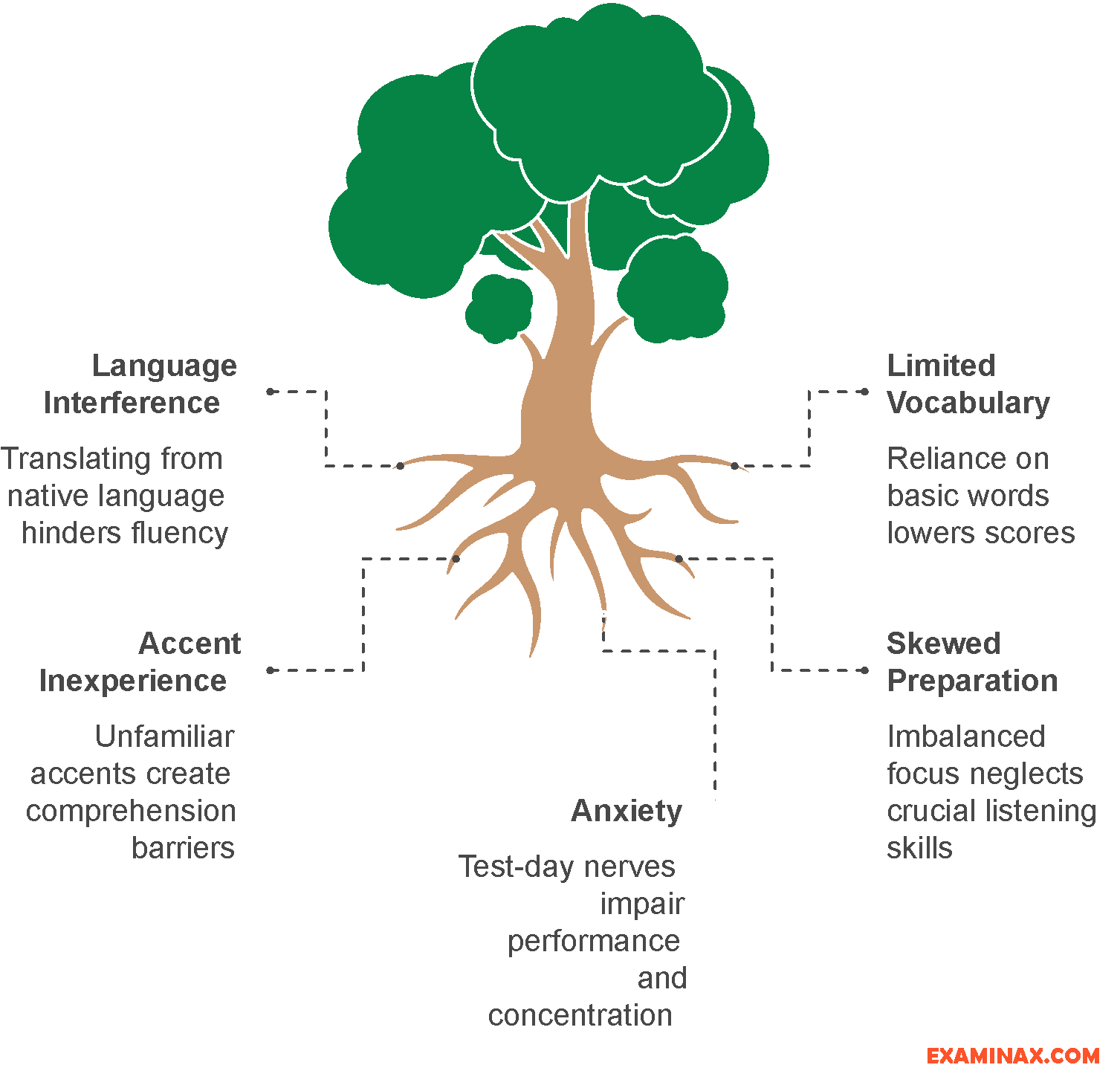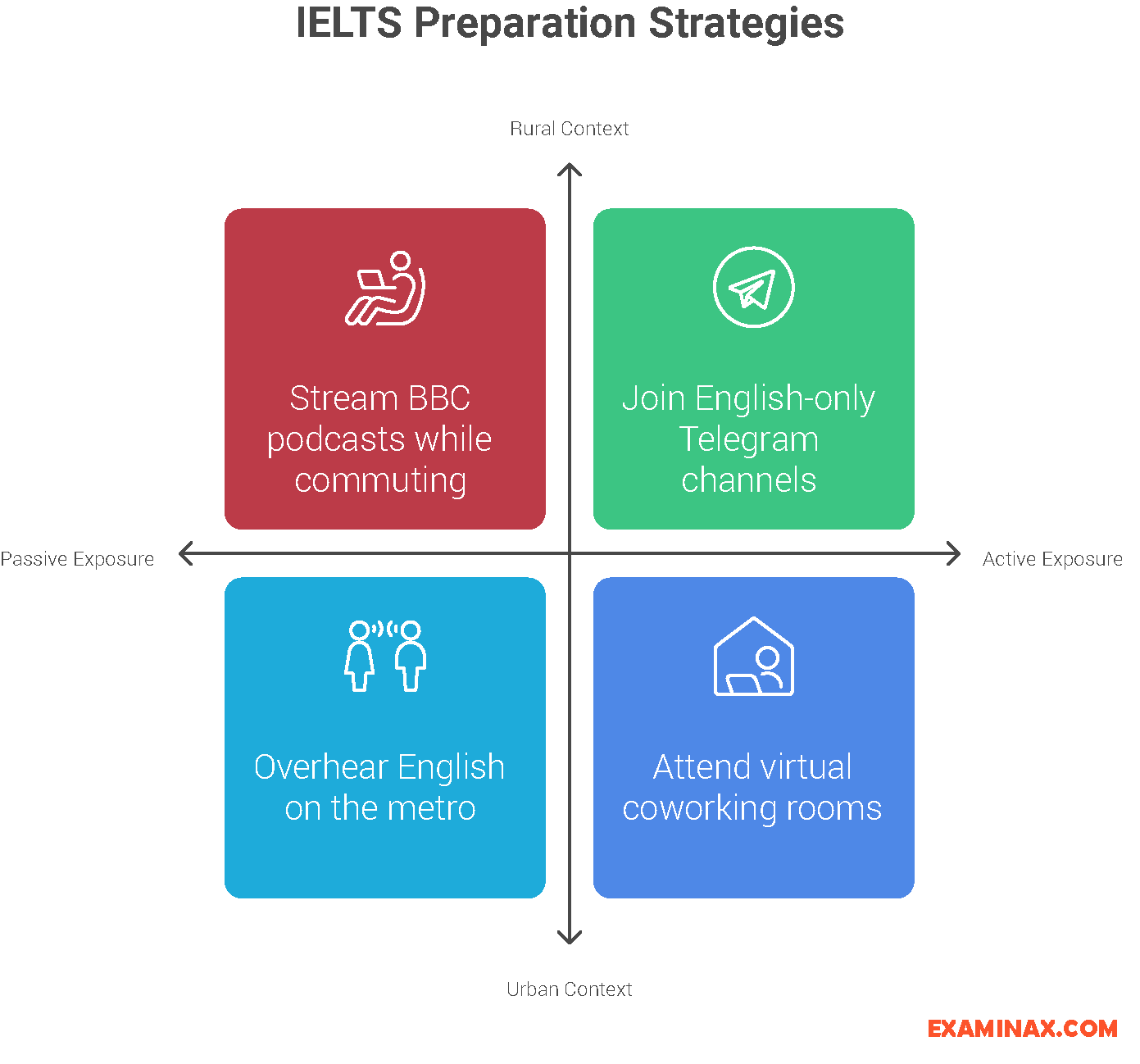Fear vs. facts
For years the phrase “IELTS is impossible” has stalked Indian study-abroad forums. Yet the data tell a subtler story. More than 1.3 million Indian candidates attempted the test in 2024 alone, and thousands hit the coveted band-7 benchmark. So, is the exam objectively hard, or is it a test of preparation mind-set? Let’s unpack the myths, using insights from Yocket’s breakdown, academic research on language testing, and high-ranking guides from IMS, Physics Wallah and other portals.
1. Understanding what IELTS really measures
IELTS evaluates four macroskills—Listening, Reading, Writing, Speaking—in real-world contexts. It isn’t a grammar quiz; it’s about communicative competence, coherence, and task achievement. That purpose matters: if you already read English news daily, the “difficulty” feels lower than for someone meeting English only in the classroom.
2. Section-wise reality check
| Section | Typical Indian perception | What the research & top blogs say | Difficulty drivers | Overcoming strategy |
|---|---|---|---|---|
| Listening | “Accents trip me up.” | Rated moderate by Yocket. | One-shot audio, unfamiliar dialects. | Shadow podcasts, do ielts mock audio drills, note-prediction. |
| Reading | “Too much text, too little time.” | Moderate–challenging in most guides. | 3× 2 000-word academic passages. | Skimming, key-word mapping, daily newspaper habit + timed ielts practice test. |
| Writing | “Task 2 essays scare me.” | “Challenging but manageable.” | Task-response, lexical variety under 60 min. | Template outlines, sample essay analysis, peer feedback in ielts online test forums. |
| Speaking | “Face-to-face stress.” | Easy–moderate if you converse daily. | Nerves, coherence under recording. | Two-minute cue-card drills, mock interviews on Zoom (ielts exam online test). |
3. Score requirements & why band 7 feels “hard”
Indian aspirants typically target 7.0+ because Australian, Canadian and UK universities list it as a safe cut-off for master’s admissions—or migration. The catch: to score 7 you must average 30/40 in Reading & Listening and meet arcane criteria in Writing/Speaking. For many, that’s a larger cognitive jump than the raw language itself.
4. Challenges unique to Indian candidates
- Mother-tongue interference—pronouncing /w/ and /v/, retroflex /t̪/ and /d̪/.
- Academic register—switching from WhatsApp English to formal discourse in Task 2.
- Regional schooling—state-board syllabi may emphasize rote grammar over productive skills.
- Cost & accessibility—₹17 000+ per attempt plus travel to metro test centres; retakes add pressure.
- Information overload—fragmented tips on social media; picking the wrong online test for ielts resources wastes weeks.

5. How tough is each band jump?
- Band 5 → 6: Foundation to competent—usually 4–6 weeks of targeted ielts mock test practice.
- Band 6 → 7: Competent to good—largest hurdle; expect 8–12 weeks plus feedback cycles.
- Band 7 → 8: Good to very good—incremental polishing; consistent mock scores 34+/40.
Physics Wallah notes that students plateau at 6.5 because they recycle the same mistakes in Writing Task 2 without expert critique.
6. Preparation frameworks that beat the “tough” label
| Timeline | Daily focus | Resources |
|---|---|---|
| Week 1–2 | Diagnostics via an ielts exam online portal; map weakest skill. | Official Cambridge sampler + free ielts mock on Yocket. |
| Week 3–6 | Skill-wise bootcamps; Listening/Reading drills one day, Writing/Speaking next. | Cambridge 18 book, YouTube accent playlists, peer-review groups. |
| Week 7–8 | Full-length ielts practice test every 3 days under exam timing. | IELTSprep, British Council computer-delivered demo. |
| Week 9–10 | Fine-tune band-descriptor gaps; vocabulary flashcards, idiom banks. | Lexical resource trackers, mentor feedback via ielts online test classes. |
Consistent mock performance, not calendar time, determines readiness; some high-proficiency candidates clear the hurdle in a month.
7. Leveraging computer-delivered & home-based formats
Since 2023, IDP India’s ielts exam online option lets you use approved centres with faster results (3–5 days). During COVID pilots, thousands attempted the ielts exam online test from home; though paused, similar “IELTS OneSkill Retake” modules now exist. These digital avenues feel less intimidating to tech-savvy Indian students and allow unlimited online test for ielts practice sessions that simulate the exact interface.
8. Mock culture: why simulations cut perceived difficulty
Pedagogically, a well-designed ielts mock test reduces cognitive load on exam day by automating section mechanics—scrolling, highlighting, timing. Think of each full-length ielts mock as a pressure-free rehearsal: you discover your average reading speed, refine note-taking shortcuts, and desensitize yourself to British, Australian and Canadian accents.
9. Case snapshots
- Riya (Delhi, CBSE alumnus) started at band 6.0 Reading. After 15 computer-delivered ielts practice test cycles and weekly essay reviews, she scored overall 7.5—higher than many UK master’s minimums.
- Arjun (Hyderabad, tech professional) used six scheduled ielts online test sessions at midnight after shifts; the flexibility let him focus on Speaking weekends via Zoom mock interviews. He hit band 8.0 in 9 weeks.
- Fatima (Kozhikode) struggled with Writing Task 1 visuals, plateauing at 6.5. She rebuilt her grammar with a bilingual tutor and swapped to the Academic ielts exam online interface with drag-and-drop charts; finally reached 7.0.
10. Common myths debunked
| Myth | Reality |
|---|---|
| “IELTS is graded harder for Indians.” | Scoring is global; only your band descriptors matter. |
| “Native speakers always ace it.” | Even UK-born nurses sometimes score 6.5 in Writing. |
| “Computer version is harder.” | Item bank is identical; difference lies in your typing speed and screen management. |
| “You must memorise rare words.” | Lexical range counts, but clarity > bombast (“utilise” ≠ higher band). |
11. Role of English exposure & context
English proficiency is built less in the classroom and more in the wild—during every song you hum, meme you scroll, or email you draft. The context in which Indian learners meet English shapes not only vocabulary but also accent comprehension, cultural references and confidence under exam pressure.

Urban vs. rural footprint. Students in Tier-1 cities binge Netflix, work in hybrid tech offices and overhear English on the metro, so their Listening and Speaking scores rise almost passively. Rural candidates may top grammar drills yet freeze at unfamiliar intonation. The cure is strategic immersion: stream BBC podcasts while commuting, join English-only Telegram channels, or attend virtual coworking rooms that mimic ielts online test noise levels.
Passive vs. active exposure. Passive listening grows recognition speed, but active production cements fluency. Try a “30-30 routine”: 30 minutes of an English news bulletin followed by a 30-word voice diary summarising it. Record and self-grade with an ielts mock test band-descriptor sheet—an easy DIY feedback loop.
Accent diversity. IELTS does not stick to one dialect. Rotate through Australian finance podcasts, Canadian vlogs and British panel shows. Use the “1.25× speed then normal” hack: first at 1.25× to force focus, then replay at normal speed for clarity. Copy new expressions into flash cards and recycle them in your next Speaking ielts practice test.
Domain switching. Many candidates grow fluent in gaming or workplace English but stumble over academic phrasing (“precipitation,” “archaeological dig”). Alternate consumption: watch a science documentary today, a lifestyle vlog tomorrow. Then write a 150-word summary—the length of Writing Task-1—keeping tone formal but concise. Upload it to a peer forum for crowd-sourced edits, or run it through an online test for ielts writing checker.
Micro-habits that compound.
- Shadow one paragraph daily—pause after every sentence in a TED-Talk transcript and repeat aloud, copying stress patterns.
- Translate bilingual signage—note tricky collocations you spot on the street and weave them into email sign-offs.
- Set your phone OS to English—forces instant recognition of functional vocabulary (“restore,” “permissions”).
- Create Speaking cue cards from newspaper headlines; practise under two-minute timers to mirror the ielts exam online test.
Immersion need not be expensive: a Rs 10 data pack and disciplined scheduling trump rote worksheets. Layered exposure—aural, visual, written and spoken—shrinks the perceived gap between you and a Band-7 speaker faster than any cram booklet. Ultimately, constant, varied interaction with real-world English transforms the IELTS from a “tough test” into familiar territory.
12. Time & money calculus
The test fee has risen to about ₹ 17 000 per sitting, and the Life Skills variant costs slightly less. Add coaching (₹ 10–40 k), travel, and optional rescheduling. A “first-time-right” mindset therefore pays dividends: investing in six high-quality ielts practice test packages (₹ 3 k) is cheaper than a retake.
13. Emotional & psychological dimensions
Fear of public speaking, writing block, and parental expectation all inflate perceived toughness. Techniques such as guided meditation, two-minute breathing before each ielts mock, and gamified score-tracking dashboards re-frame the test as a series of manageable milestones.
14. What high scorers do differently
- Set a score + deadline (e.g., 7.0 by Sept 15) and reverse-engineer tasks.
- Use error logs; every wrong answer in an ielts mock test gets tagged by cause (vocabulary gap, scanning error, etc.).
- Replace passive reading with active annotation—predict headings, underline thesis statements.
- Speak English socially: group study, voice-chat servers, Toastmasters.
- Simulate noise: many test centres echo; practise Listening ielts practice test in a café to inoculate distraction.
15. When is the exam genuinely “tough”?
- Band 8+ ambitions for top journalism or migration streams demand near-native collocations.
- Limited prep window (≤ 2 weeks) if you never wrote formal essays.
- Severe test anxiety unaddressed by mocks or counselling.
- Poor tech literacy for computer delivery; scrolling mis-clicks waste reading minutes.
These scenarios require specialised prep—one-on-one tutoring, mindfulness courses, or extended timelines.
16. Future trends: will IELTS get easier?
IDP and Cambridge are piloting shorter modules and single-section retakes; AI proctoring may reopen the at-home ielts exam online test. For Indian aspirants, that could mean cheaper, modular attempts—lowering both monetary and psychological difficulty.
Conclusion: Verdict on “toughness”
For the average Indian student with intermediate English, IELTS is challenging but conquerable. The leap from conversational fluency to academic proficiency is less about innate talent and more about structured exposure—ielts mock test, targeted feedback, and consistent online test for ielts drills. By aligning preparation with the band-descriptor rubric and embracing digital practice platforms, what once looked like a 7-band mountain becomes a well-signed trail. In short, IELTS is as hard—or as easy—as the strategy you choose.